Table of content
- Main Components
- Marinade
- Sauce
- Garnishes and Enhancements
- Cleaning and Trimming the Liver
- Marinating Technique
- Prepping Vegetables and Aromatics
- Step 1: Preheating the Wok
- Step 2: Searing the Aromatics
- Step 3: Cooking the Vegetables
- Step 4: Searing the Duck Liver
- Step 5: Combining and Saucing
- Step 6: Finishing Touches
Stir-fried duck liver is a dish that marries rich, earthy flavors with a tender texture, offering a culinary experience that is both comforting and sophisticated. Often overlooked in favor of more mainstream meats, duck liver presents a unique canvas for creativity in the kitchen. When prepared correctly, it becomes a delicate balance of savory umami and subtle sweetness, elevated by aromatic spices and fresh herbs. This article delves into the intricacies of crafting the perfect stir-fried duck liver, from selecting the finest ingredients to mastering the stovetop technique that ensures every bite is melt-in-your-mouth perfection.
The Allure of Duck Liver
Duck liver, prized in global cuisines from French foie gras to Asian street food, is a nutrient-dense organ meat rich in iron, vitamin A, and protein. Unlike chicken liver, which is milder, duck liver boasts a deeper, more robust flavor profile. When stir-fried, it retains its tenderness while absorbing the flavors of marinades and sauces, making it a versatile ingredient for bold, flavorful dishes. However, its delicate nature demands careful handling to avoid toughness or a metallic aftertaste.
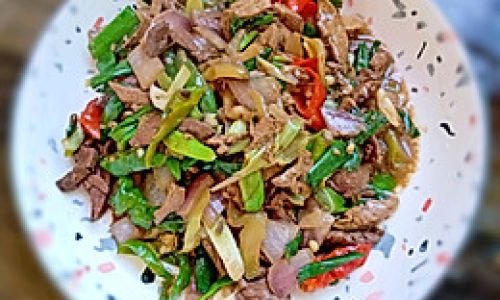
Ingredients: Building Flavor Layers
The success of any stir-fry lies in the harmony of its components. For duck liver, the key is to balance its inherent richness with contrasting textures and bright, acidic notes. Below is a list of essential ingredients, along with substitutions and enhancements to suit personal tastes:
Main Components
- Duck Liver (500g): Freshness is paramount. Look for livers with a deep red hue, smooth texture, and no discoloration.
- Aromatics: Garlic (4 cloves, minced), ginger (1 tbsp, grated), and scallions (3 stalks, sliced diagonally) form the flavor base.
- Vegetables: Onions (1 medium, thinly sliced), bell peppers (1 red, 1 green, julienned), and mushrooms (100g, sliced) add crunch and earthiness.
- Spices: Sichuan peppercorns (1 tsp, toasted and ground) and star anise (1 pod) introduce warmth and complexity.
Marinade
A marinade not only tenderizes the liver but also infuses it with depth. Combine:
- Shaoxing wine (2 tbsp) or dry sherry
- Soy sauce (1 tbsp, light for saltiness)
- Oyster sauce (1 tbsp)
- Cornstarch (1 tsp)
- White pepper (½ tsp)
Sauce
The stir-fry sauce ties the dish together. Mix:
- Chicken broth (¼ cup)
- Hoisin sauce (1 tbsp)
- Rice vinegar (1 tsp)
- Sesame oil (1 tsp)
- Sugar (½ tsp)
Garnishes and Enhancements
- Fresh cilantro (¼ cup, chopped)
- Toasted sesame seeds (1 tsp)
- Chili flakes (½ tsp, optional)
- Lime wedges (for serving)
Preparation: The Foundation of Excellence
Cleaning and Trimming the Liver
Duck liver requires meticulous cleaning to remove any bitterness. Rinse the livers under cold water, then pat dry. Trim away sinew, veins, or discolored patches using kitchen shears. Slice the liver into bite-sized pieces (approximately 1-inch thick), ensuring uniformity for even cooking.
Marinating Technique
Marinating is a critical step to tenderize the liver and impart flavor. In a bowl, combine the liver with the marinade ingredients. Toss gently, ensuring each piece is coated. Let it rest for 15–20 minutes at room temperature. Avoid over-marinating, as prolonged exposure to acidic ingredients (like soy sauce) can toughen the meat.
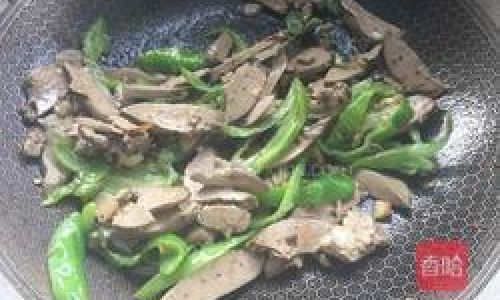
Prepping Vegetables and Aromatics
Precision in chopping vegetables ensures they cook evenly. Julienne bell peppers into thin strips, slice onions into half-moons, and thinly slice mushrooms. Mince garlic and ginger finely to release their oils during stir-frying.
Cooking Technique: The Dance of Heat and Timing
Stir-frying is a high-heat, quick-cooking method that demands focus and speed. A well-seasoned carbon steel wok is ideal, but a large skillet works too.
Step 1: Preheating the Wok
Heat the wok over high heat until it begins to smoke. Add 2 tbsp of neutral oil (peanut or vegetable) and swirl to coat the surface. Proper preheating prevents sticking and sears the ingredients quickly.
Step 2: Searing the Aromatics
Add Sichuan peppercorns and star anise to the hot oil. Stir-fry for 10 seconds until fragrant, then add garlic, ginger, and half the scallions. Sauté for 30 seconds until golden but not burnt.
Step 3: Cooking the Vegetables
Toss in onions and bell peppers. Stir-fry for 2 minutes until slightly softened. Add mushrooms and cook for another minute. Remove the vegetables from the wok and set aside.

Step 4: Searing the Duck Liver
Return the wok to high heat and add 1 tbsp oil. Drain the marinated liver (discard excess liquid) and add it to the wok in a single layer. Let it sear undisturbed for 1 minute to develop a caramelized crust. Flip and cook for another 30 seconds. Overcrowding the pan will steam the liver, so work in batches if necessary.
Step 5: Combining and Saucing
Return the vegetables to the wok. Pour in the pre-mixed sauce and toss vigorously for 1–2 minutes until the sauce thickens and coats the ingredients. The liver should be cooked through but still pinkish-brown in the center—overcooking results in a grainy texture.
Step 6: Finishing Touches
Remove from heat and stir in the remaining scallions, cilantro, and sesame seeds. A drizzle of sesame oil adds glossiness. Taste and adjust seasoning with salt or a pinch of sugar if needed.
Tips for Perfect Stir-Fried Duck Liver
- Temperature Control: Maintain high heat throughout cooking to achieve a smoky wok hei flavor without steaming the ingredients.
- Timing is Key: Duck liver cooks rapidly. Overcooking by even 30 seconds can render it tough.
- Marinade Magic: Cornstarch in the marinade creates a protective coating, sealing in juices.
- Resting: Let the cooked liver rest for 2–3 minutes before serving to redistribute moisture.
- Spice Variations: Experiment with black pepper, cumin, or five-spice powder for different regional twists.
Serving Suggestions
- Rice Pairing: Serve over steamed jasmine rice or fragrant basmati to soak up the sauce.
- Noodle Companion: Toss with thin egg noodles or udon for a heartier meal.
- Appetizer Platter: Arrange on lettuce cups with pickled vegetables for a refreshing contrast.
- Brunch Twist: Pair with a fried egg and crusty bread for a decadent breakfast.
Health Considerations and Safety
While duck liver is nutrient-rich, it is also high in cholesterol and vitamin A. Moderation is advised, especially for pregnant individuals or those with liver conditions. To minimize health risks:
- Source liver from reputable suppliers to ensure freshness.
- Avoid consuming raw or undercooked liver.
- Balance the dish with fiber-rich vegetables and whole grains.
Troubleshooting Common Issues
- Tough Texture: Overcooking is the primary culprit. Reduce cooking time by 15–30 seconds.
- Bitter Aftertaste: Inadequate cleaning or overcooked spices. Rinse livers thoroughly and toast spices gently.
- Bland Flavor: Increase the marinade time or add a splash of fish sauce for umami depth.
Cultural Variations
Stir-fried duck liver appears in diverse culinary traditions:
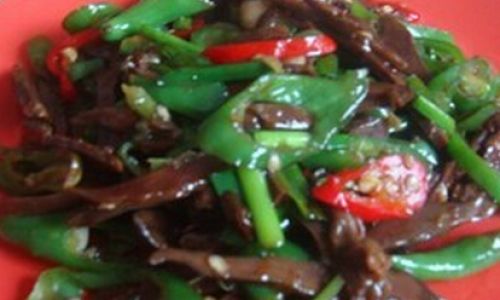
- Chinese Style: Emphasizes ginger, soy, and rice wine, often served with fermented black beans.
- Vietnamese Influence: Incorporates lemongrass, lime, and chili for a bright, herbaceous twist.
- French Fusion: Pair with caramelized onions and a red wine reduction for a gourmet presentation.
Conclusion: Elevating the Humble Organ
Stir-fried duck liver is a testament to the magic of simple, intentional cooking. By respecting the ingredient’s delicate nature and balancing flavors with precision, even a novice cook can achieve restaurant-quality results. Whether enjoyed as a weeknight dinner or a banquet centerpiece, this dish invites diners to savor the complexity of offal transformed into culinary artistry. So, the next time you encounter duck liver, embrace the challenge—your taste buds will thank you.
Final Note: Experimentation is encouraged. Adjust spices, vegetables, and garnishes to suit your palate. After all, the heart of cooking lies not in rigid adherence to recipes, but in the joy of creating something delicious.
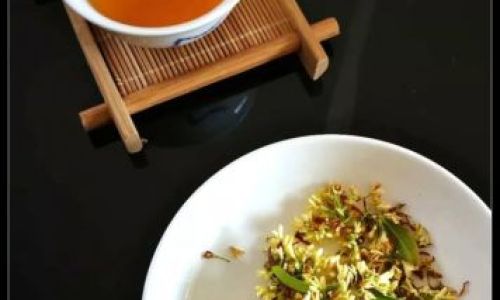
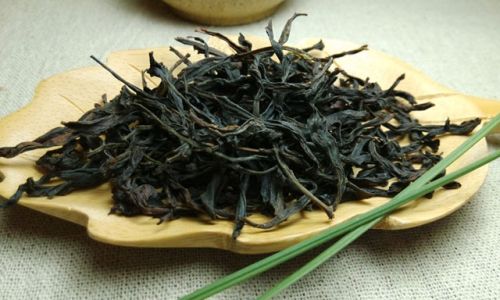



0 comments